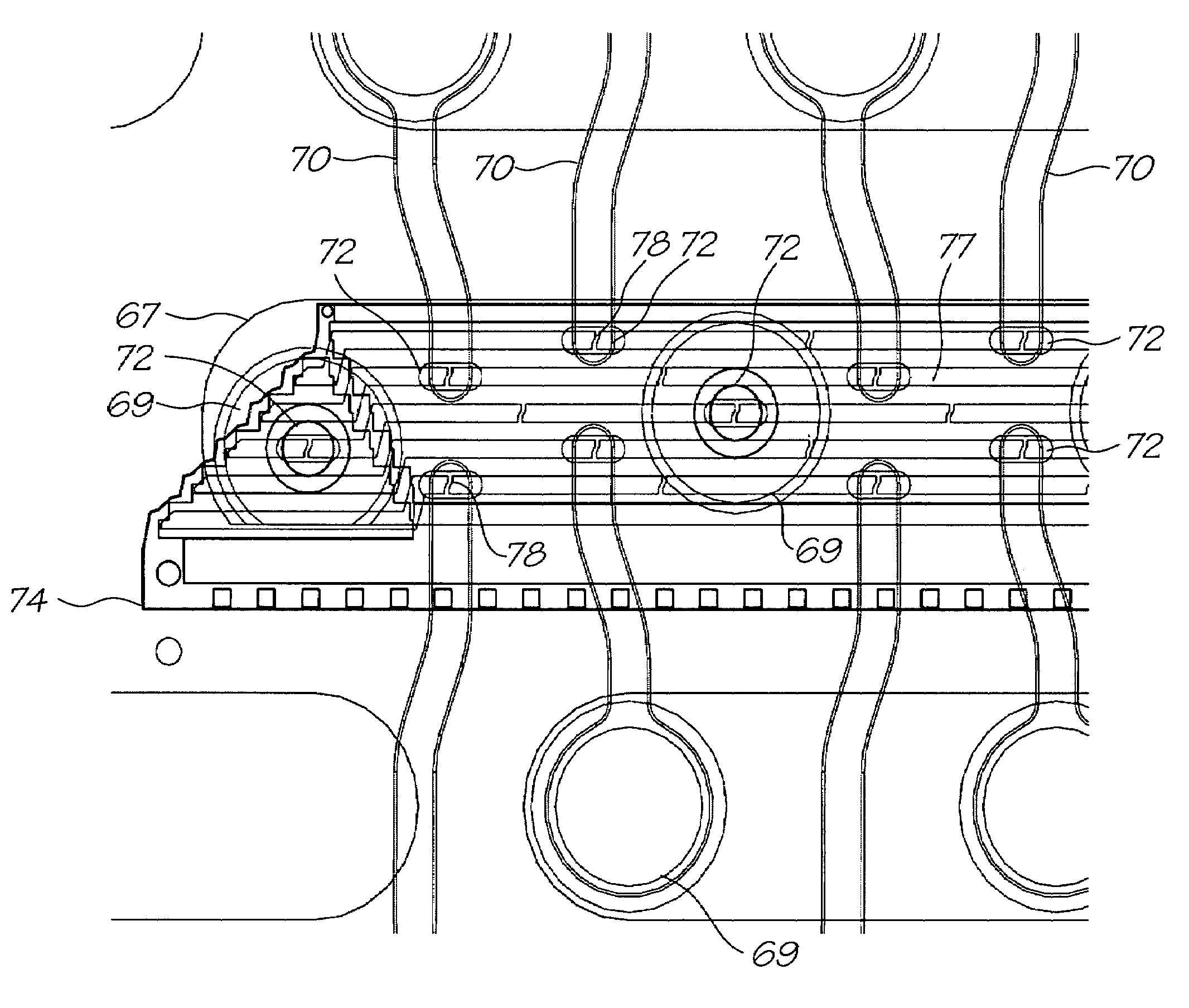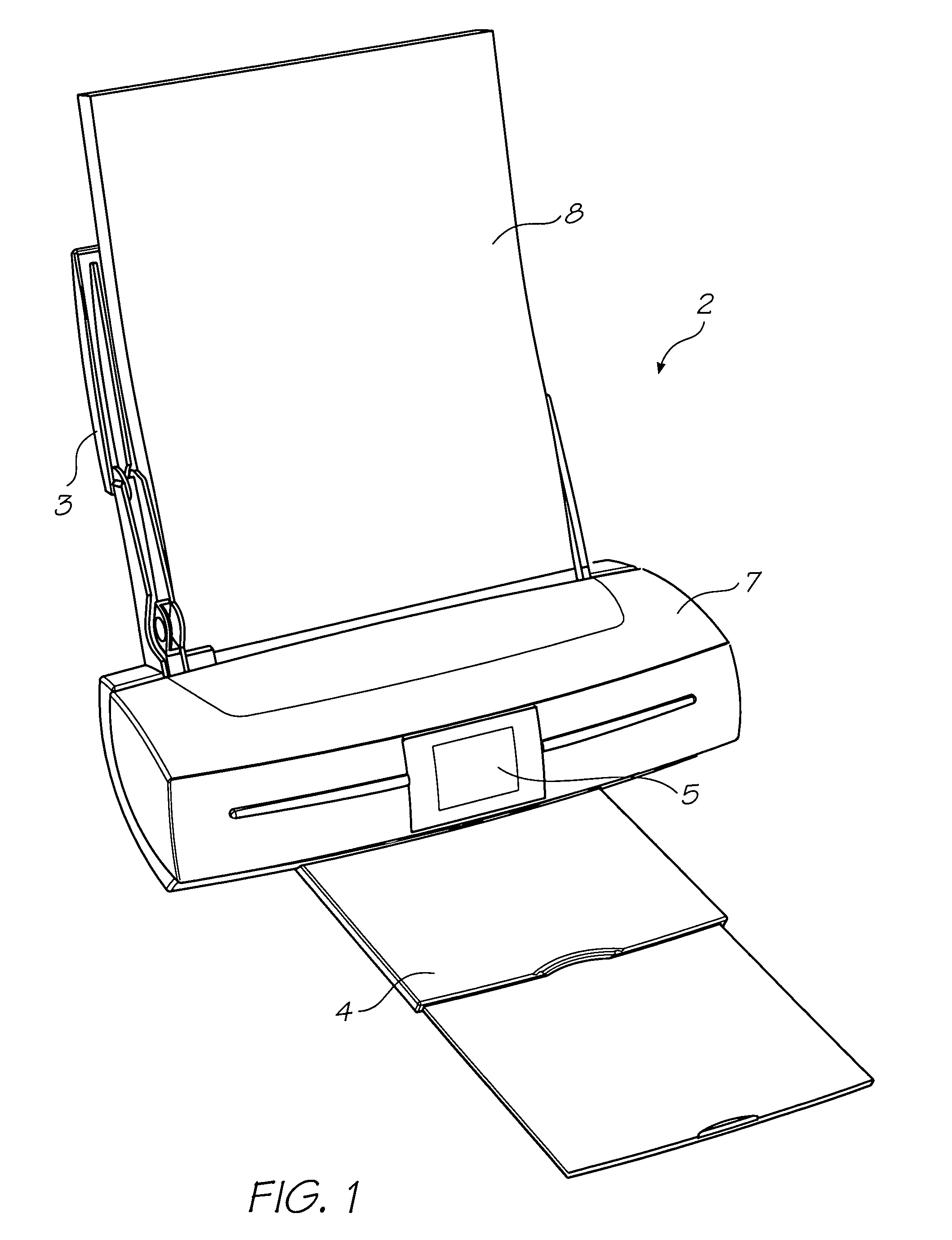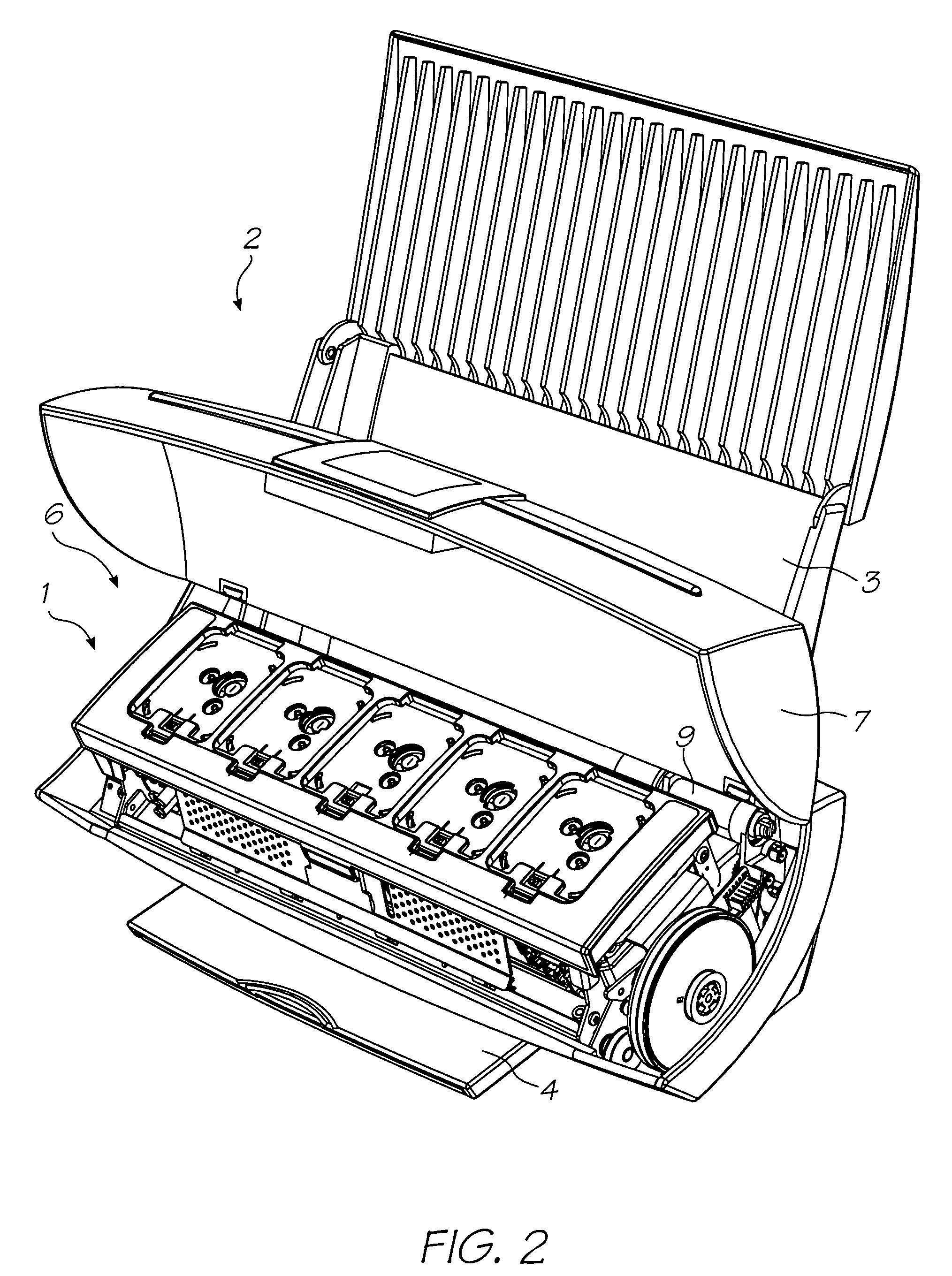Method of bonding substrates
a technology of substrates and bonding methods, applied in the direction of printing, electrical equipment, inking equipment, etc., can solve the problems of affecting the bonding effect of substrates, and generally not desirable to abrade substrate surfaces,
- Summary
- Abstract
- Description
- Claims
- Application Information
AI Technical Summary
Benefits of technology
Problems solved by technology
Method used
Image
Examples
Embodiment Construction
[0111]A specific form of the invention is described below in the context of fabricating a printhead assembly for an inkjet printer. However, it will be appreciated that the invention may be used in connection with bonding any two substrates together and is not in any way limited to the specific embodiment of printhead fabrication.
Inkjet Printer Unit
[0112]FIG. 1 shows a printer unit 2 comprising a media supply tray 3, which supports and supplies media 8 to be printed by the print engine (concealed within the printer casing). Printed sheets of media 8 are fed from the print engine to a media output tray 4 for collection. User interface 5 is an LCD touch screen and enables a user to control the operation of the printer unit 2.
[0113]FIG. 2 shows the lid 7 of the printer unit 2 open to expose the print engine 1 positioned in the internal cavity 6. Picker mechanism 9 engages the media in the input tray 3 (not shown for clarity) and feeds individual streets to the print engine 1. The print...
PUM
 Login to View More
Login to View More Abstract
Description
Claims
Application Information
 Login to View More
Login to View More - R&D
- Intellectual Property
- Life Sciences
- Materials
- Tech Scout
- Unparalleled Data Quality
- Higher Quality Content
- 60% Fewer Hallucinations
Browse by: Latest US Patents, China's latest patents, Technical Efficacy Thesaurus, Application Domain, Technology Topic, Popular Technical Reports.
© 2025 PatSnap. All rights reserved.Legal|Privacy policy|Modern Slavery Act Transparency Statement|Sitemap|About US| Contact US: help@patsnap.com



